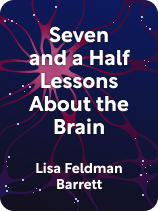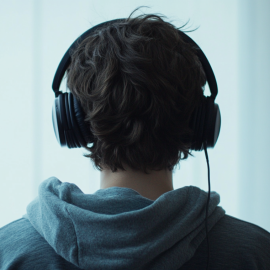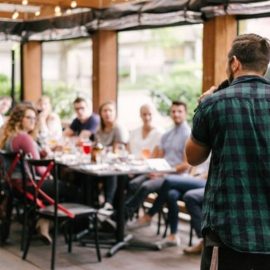

This article is an excerpt from the Shortform book guide to "Seven and a Half Lessons About the Brain" by Lisa Feldman Barrett. Shortform has the world's best summaries and analyses of books you should be reading.
Like this article? Sign up for a free trial here.
What is the importance of collaboration? How do our brains support socialization?
The brain requires input from our environments to properly develop. Long after it’s done developing, however, the brain continues to solicit information from other brains to perform daily tasks.
Learn why collaboration is important for the development of human brains, below.
Brains Collaborate in Four Ways
What is the importance of collaboration for our brains’ health? The science behind our brains is what makes us social animals and has profound effects on our well-being. In Seven and a Half Lessons About the Brain, Lisa Feldman Barrett explains that our brains are constantly collaborating with each other in four key ways:
1. Our interactions with other people encourage our neurons’ tuning process to strengthen certain neural connections over others. This process is particularly intense when we’re newborns, but it continues throughout life. For example, when you interact often with a person who speaks a different language, you might learn to speak some words in their language to communicate more easily with them.
(Shortform note: Anthropologists found another way that brains collaborate and impact each others’ well-being: They argue that our brain’s reliance on interaction is one reason for long human lifespans. Since young humans are dependent on their environment and the people around them, interacting with them to help them develop gives older humans a reason to stay active and healthy longer.)
2. Our internal bodily functions have a regulating effect on the people around us, Barrett says. Brains coordinate with brains around them, matching breathing and heartbeat patterns, especially when we’re in intense interactions (whether they’re positive or negative). This can have a calming effect, for example, or help you collaborate with others more effectively.
(Shortform note: You don’t even need to be in the same room with someone for your brains to synchronize. A study found that the brains of online gamers playing together from different places can get on the same brain wave frequency. In fact, the more able they are to sync up their brains, the better their performance as a team in the game.)
3. Our conscious actions impact others’ energy budgets and well-being. For example, Barrett claims that saying something comforting to a person in distress can help them relax and require less energy to bring themselves back to a neutral state. On the other hand, acting in a threatening way can trigger their danger response and increase their energy load.
(Shortform note: In How Emotions Are Made, Barrett explains that our influence on others’ emotional states can extend to impact their physical health. For example, if someone is causing you anxiety, your brain can interpret it as a physical danger and generate cortisol to help you be alert. That unnecessary cortisol can trigger inflammation in the body, making you ill and thus turning an anxiety-inducing social encounter into physical illness.)
4. Our brains collaborate to create a shared social reality, which includes all of the sociocultural elements that structure our life and don’t rely on physical reality. For example, we agree on national borders, the value of products and currencies, the authority of certain figures, and the power of laws.
Humans are able to create social reality because we have the following abilities:
- Creativity: the ability to generate new ideas
- Communication: the ability to share those new ideas with others
- Cooperation: the ability to work together to make ideas part of our reality
- Copying: the ability to follow other people’s example
- Compression: the ability to absorb and summarize huge amounts of information and extract meaning from them based on their function rather than their shape.
(Shortform note: Some scientists believe that our capacity to create social reality has made the world more complicated than our brains were prepared for. By using our skills, we’ve made our environment a lot more complex—such as creating government systems, political parties, and elections that millions of people vote in. But our brains are still essentially the same brains that early humans used to live in tribes of around 150 people, and they revert to using the same tools to deal with increasingly complicated problems. For example, we revert to cognitive biases that helped us survive millions of years ago, such as tribalism, but that limit our capacity to handle today’s challenges.)
The Responsibilities and Importance of Brain Collaboration
Barrett claims that collaboration is important because the ways our brains collaborate make us a social species, which improves our day-to-day lives. For example, people who have supportive relationships live longer than those who constantly feel lonely. (Shortform note: Other social species, such as some primates and dolphins, also have better health outcomes when their social networks are strong. When they’re isolated or face social stress, however, they suffer from stress, reduced health, and a shorter average lifespan.)
Since we impact each other’s well-being as a social species, Barrett notes that we also have the following responsibilities:
1. We have to make a conscious effort to empathize with people who are different from us. If we don’t make a deliberate effort to do this, our brains default to collaborating and syncing up with people we already understand and agree with.
2. We have to find a balance in the conflict between individual rights and the impact we have on each other’s energy-regulating functions. For example, the exercise of individual freedom of speech might have a negative effect on people if our speech causes them stress, which affects the energy-regulating capacity of their brain.
(Shortform note: One way you can keep other people’s actions from having a negative impact on your energy budget and well-being is to make a conscious effort to resolve all conflicts before ending your day. Researchers found that people who worked through arguments on the same day before going to sleep could keep their stress hormone levels from piling up day after day, effectively flushing cortisol out of their system each day to stay healthy.)
3. We have to understand the risks of social reality. Although we generally agree on aspects of social reality like borders and currency, disagreements happen and can be problematic, or even deadly, such as in wars over boundary disputes between nations. Also, some social realities are harmful, such as racism.
(Shortform note: This is perhaps the hardest responsibility to take on because social reality relies on the belief that others experience the world in the same way we do. When we find evidence that others disagree with our social reality or want to change it, we instinctively turn to our families or core social groups that do share our social reality to affirm what we believe. This is why challenging negative social realities is difficult and frequently causes conflict.)
Empathy is a skill that comes naturally to us, but with limitations, such as who we’re able to empathize with. It’s also a complex skill that needs to be practiced throughout life and that children need to be taught. If you’re a parent or caretaker, you can help your children develop empathy by teaching these skills, which Daniel Siegel and Tina Payne Bryson list in The Whole-Brain Child:
- Seeing another person’s perspective: Help your child practice this skill by frequently asking questions about how someone else might feel and why someone may have reacted in a certain way.
- Interpreting nonverbal communication: Help your child learn to read nonverbal cues by encouraging her to notice other people’s body language, and explaining the emotions it reflects.
- Making amends: Teach your child that there are times when she needs to perform a follow-up action to make things right after a conflict, and help her to determine the appropriate action.

———End of Preview———
Like what you just read? Read the rest of the world's best book summary and analysis of Lisa Feldman Barrett's "Seven and a Half Lessons About the Brain" at Shortform.
Here's what you'll find in our full Seven and a Half Lessons About the Brain summary:
- How the human brain develops and operates
- Why the brain isn't organized in the way you thought it was
- How brains collaborate with one another






